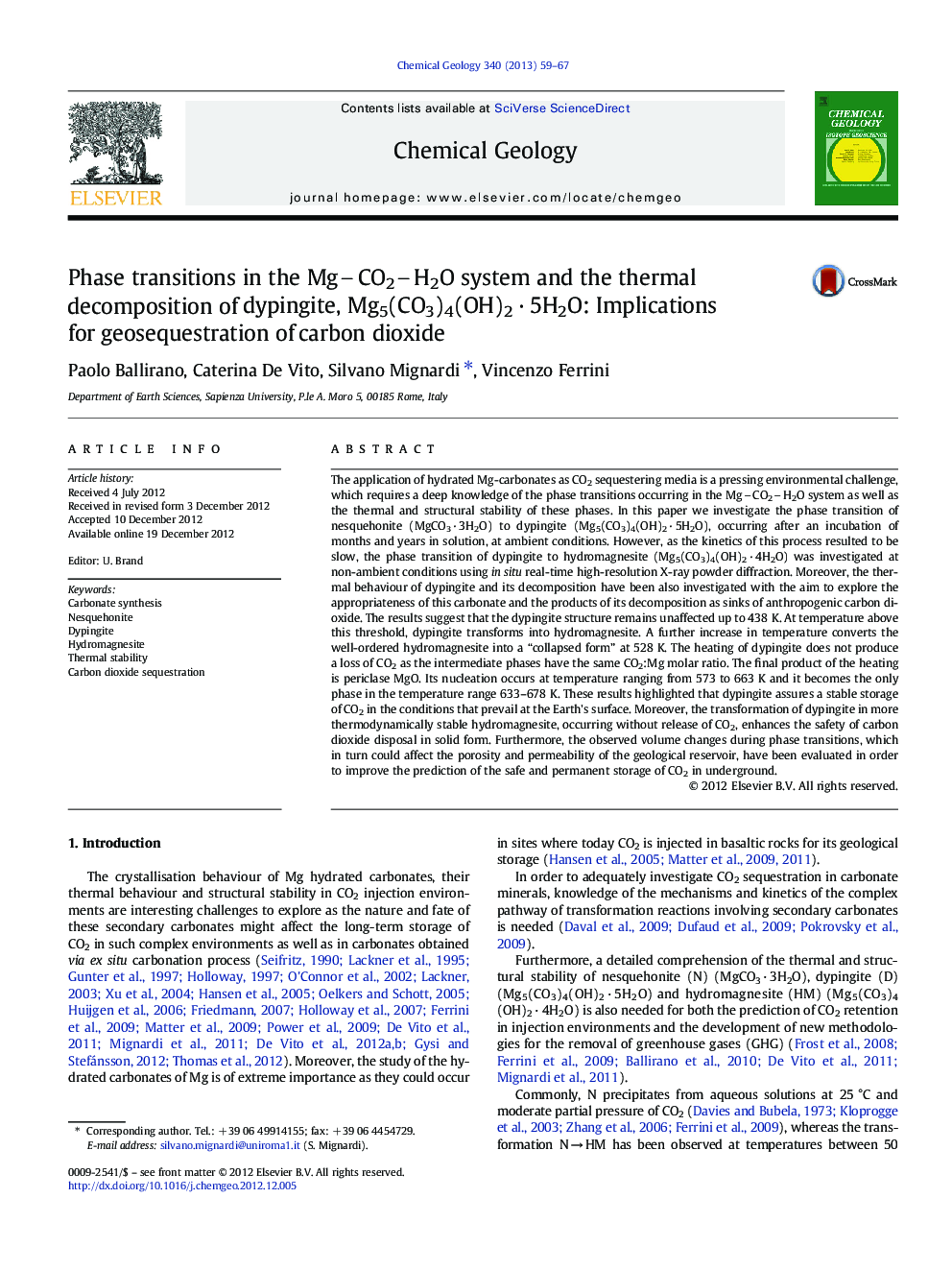| کد مقاله | کد نشریه | سال انتشار | مقاله انگلیسی | نسخه تمام متن |
|---|---|---|---|---|
| 4699089 | 1637628 | 2013 | 9 صفحه PDF | دانلود رایگان |

The application of hydrated Mg-carbonates as CO2 sequestering media is a pressing environmental challenge, which requires a deep knowledge of the phase transitions occurring in the MgCO2H2O system as well as the thermal and structural stability of these phases. In this paper we investigate the phase transition of nesquehonite (MgCO3 · 3H2O) to dypingite (Mg5(CO3)4(OH)2 · 5H2O), occurring after an incubation of months and years in solution, at ambient conditions. However, as the kinetics of this process resulted to be slow, the phase transition of dypingite to hydromagnesite (Mg5(CO3)4(OH)2 · 4H2O) was investigated at non-ambient conditions using in situ real-time high-resolution X-ray powder diffraction. Moreover, the thermal behaviour of dypingite and its decomposition have been also investigated with the aim to explore the appropriateness of this carbonate and the products of its decomposition as sinks of anthropogenic carbon dioxide. The results suggest that the dypingite structure remains unaffected up to 438 K. At temperature above this threshold, dypingite transforms into hydromagnesite. A further increase in temperature converts the well-ordered hydromagnesite into a “collapsed form” at 528 K. The heating of dypingite does not produce a loss of CO2 as the intermediate phases have the same CO2:Mg molar ratio. The final product of the heating is periclase MgO. Its nucleation occurs at temperature ranging from 573 to 663 K and it becomes the only phase in the temperature range 633–678 K. These results highlighted that dypingite assures a stable storage of CO2 in the conditions that prevail at the Earth's surface. Moreover, the transformation of dypingite in more thermodynamically stable hydromagnesite, occurring without release of CO2, enhances the safety of carbon dioxide disposal in solid form. Furthermore, the observed volume changes during phase transitions, which in turn could affect the porosity and permeability of the geological reservoir, have been evaluated in order to improve the prediction of the safe and permanent storage of CO2 in underground.
Figure optionsDownload as PowerPoint slideHighlights
► We investigate the potential application of dypingite as a sink of CO2.
► The phase transitions dypingite–hydromagnesite have been investigated at non-ambient conditions.
► The heating of dypingite produces hydromagnesite without release of CO2.
► Thermal stability of dypingite assures the storage of CO2 in the Earth's surface conditions.
Journal: Chemical Geology - Volume 340, 24 February 2013, Pages 59–67